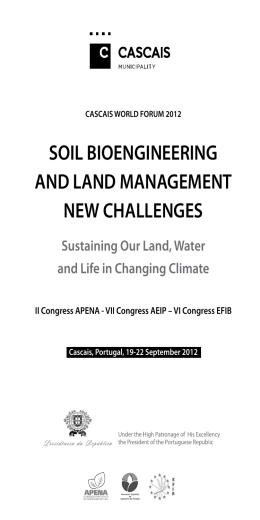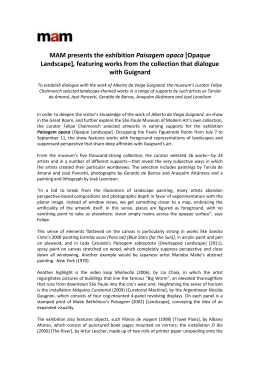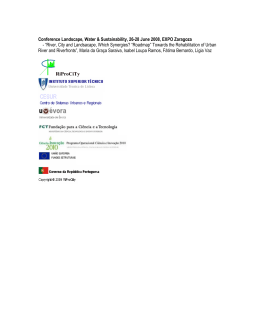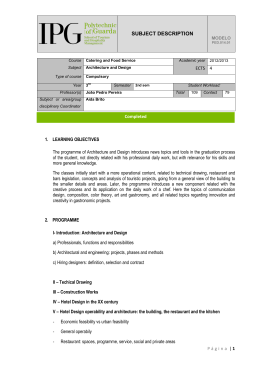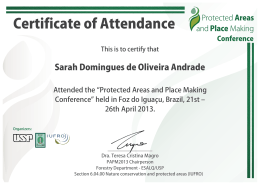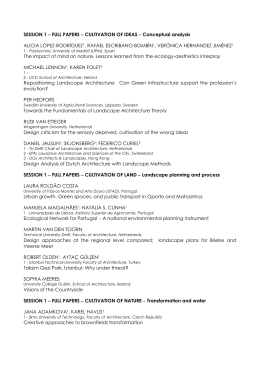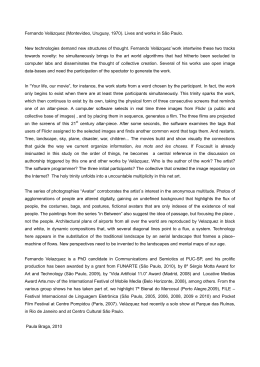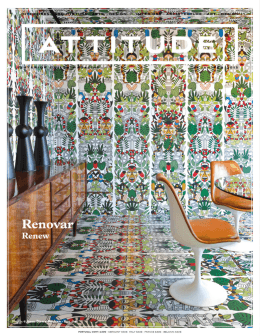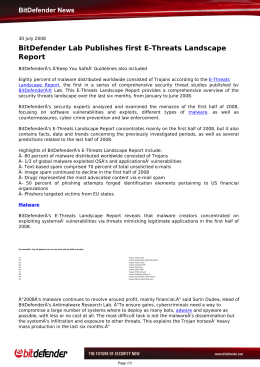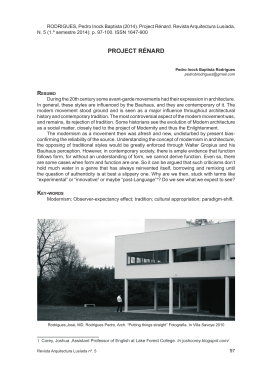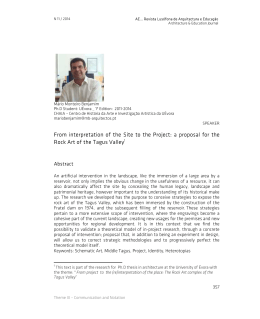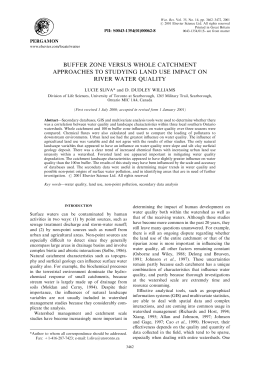Dynamic Cities: On the Contemporary Landscape Transformation Is it possible to include in urban landscapes, the conservation and complexity we find in nature reserve? And how can we reconcile the urban future with natural and cultural processes of landscape? The consequences of unprecedented technical progress, originating in Enlightment thought, became visible when, starting in the 19th century, cities’ physical borders became non-existent making changes in the landscape visible. In Anthropocene times1, the conviction that science would emancipate humanity from the chains of superstition and medieval obscurity2 gave way to broad urbanization, materialized in the shape of scattered hamlets and undefined urban perimetres, disconnected from their biophysical and cultural background3. Throughout the 20th century, and particularly towards the last decades, this phenomenon became a problem when progress and modernization meant the same as being independent from human culture regarding other communities and regarding human and non-human processes that were vital to the functioning of the landscape for the 21st century man – i.e. cities. With this abstraction regarding cultural and ‘natural’ functioning of the urban landscape, modernization’s tabula rasa tendency encouraged urban areas that are static in time and which, considering each place’s intrinsic energies, are incapable of reacting and generating new dynamics and are conditioned by the urban projects on paper. A few authors have recently suggested concepts to the modern Urban Planning bodies, providing examples such as Critical Regionalism4, Paisagem Global5, Landscape Urbanism6, Terra Fluxus7, Rehabilitación8, Projecto à Vela9. These proposals are characterized for being dynamic and flexible ways of thinking cities, capable of adapting to contingent urban phenomena in an efficient, sustainable and resilient manner throughout time. The aim of this lecture is to present 3 projects, which put into practice concepts for the Future of Urban Systems and which are dynamic and flexible throughout time, namely the Sea Fronts of the cities of Chioggia (Italy) and Figueira da Foz (Portugal), and the World Art & Culture City in Macau (China). The Urban Planning here suggested derives from our being aware that cities are thus built by a Hybrid and Ecclectic System instead of merely using the Natural System in areas that compensate modern cities’ lack of sustainability and balance. Keywords: Landscape, Urban, Dynamics, Systems, Time. 1 Sijmons, Dirk, “Waking up in the Anthropocene”, in Sijmons, Dirk, An Introduction to Urban by Nature, Rotterdam, IABR, 2014, pp. 27 2 Ferry, Luc, The New Ecological Order, Chicago, University of Chicago Press, 1995, pp. 190 3 Lamas, José M. R. G., Morfologia Urbana e Desenho da Cidade, (“Textos Universitários de Ciências Sociais e Humanas”), 3rd ed., Porto, Portugal, Fundação Calouste Gulbenkian, 2004, pp. 564 4 Frampton, Kenneth, “Towards a Critical Regionalism: Six Points for an Architecture of Resistance”, in The Anti-Aesthetic: Essays on Postmodern Culture, pp. 183 5 Teles, Gonçalo R., “Paisagem Global - Um Conceito para o Futuro”, in Serrão, Adriana V., Filosofia da Paisagem - Uma Antologia, (“Aesthetica 1”), Braga, Centro de Filosofia da Universidade de Lisboa, 2011, pp. 502 6 Waldheim, Charles, The Landscape Urbanism Reader, 1st ed., New York, Princeton Architectural Press, 2006, pp. 288 7 Corner, James, “Terra Fluxus”, in Ábalos, Iñaki, Naturaleza y Artificio - El Ideal Pintoresco en la Arquitectura y el Paisajismo Contemporáneos, (“Compendios de Arquitectura Contemporânea”), Barcelona, Spain, Editorial Gustavo Gili, 2009 , p. 139 8 Latz, Peter, “Rehabilitación”, in Colafranceschi, Daniela, Landscape + 100 Palabras Para Habitarlo, 1.ª ed., Barcelona, Editorial Gustavo Gili, 2007, pp. 222 9 Nunes, João F., PROAP - Arquitectura Paisagista, 1.ª ed., Lisboa, Note Editora, Dezembro, 2010, pp. 263 !1 Fig. 1 - World Art & Culture City (Macau, China, 2013 - …). Fig. 2 - Chioggia Renovatio - “Back to the Future” (Chioggia, Italy, 2013). Fig. 3 - "Living the Atlantic Coast” (Figueira da Foz, Portugal, 2011). !2
Download
